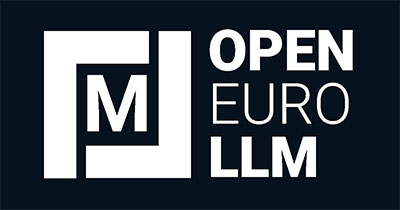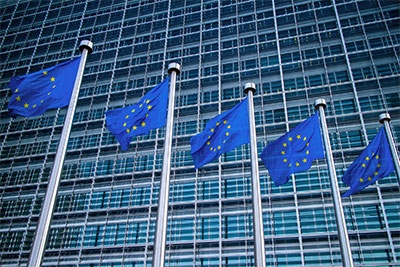Europe’s quest for digital sovereignty has taken a significant leap forward with the launch of OpenEuroLLM. This ambitious initiative aims to develop open-source, multilingual large language models (LLMs) that align with European values and regulatory standards. But what does OpenEuroLLM truly signify for Europe’s AI future?
A Collaborative Effort for European AI

OpenEuroLLM brings together a consortium of over 20 European research institutions, companies, and EuroHPC centres. Coordinated by Jan Hajič of Charles University in Czechia and co-led by Peter Sarlin of AMD Silo AI in Finland, this alliance exemplifies Europe’s commitment to fostering homegrown AI capabilities. The project’s primary objective is to create a family of high-performance, multilingual LLMs that serve commercial, industrial, and public sectors. By doing so, OpenEuroLLM seeks to democratise access to advanced AI technologies, enabling European enterprises and public organisations to compete effectively on a global scale. OpenEuroLLM
A cornerstone of OpenEuroLLM is its dedication to transparency and adherence to European regulations, notably the EU AI Act. In contrast to many proprietary AI models, OpenEuroLLM’s offerings will be fully open-source. This openness encompasses not only the models themselves but also the associated data, training methodologies, and evaluation metrics. Such transparency ensures that AI systems are trustworthy, ethical, and free from biases that could compromise individual rights. Moreover, by aligning with the EU AI Act, OpenEuroLLM guarantees that its models meet stringent requirements for safety, transparency, and accountability. Digital Strategy
Preserving Linguistic and Cultural Diversity
Europe’s rich tapestry of languages and cultures is a defining characteristic of the continent. OpenEuroLLM acknowledges this diversity by developing models that support all 24 official EU languages. This inclusivity ensures that AI technologies are accessible and relevant to a broad spectrum of users, fostering digital inclusion and preserving cultural heritage. By catering to multiple languages, OpenEuroLLM empowers businesses and public services to engage effectively with diverse communities across Europe and beyond. Slator
Strengthening Digital Sovereignty
In recent years, Europe’s reliance on non-European AI technologies has raised concerns about data privacy, security, and autonomy. OpenEuroLLM addresses these issues head-on by providing an indigenous alternative that reduces dependence on external AI providers. By developing and hosting AI models within Europe, the initiative ensures that data remains under European jurisdiction, thereby enhancing control over information and reinforcing digital sovereignty. This strategic move not only safeguards sensitive data but also stimulates local innovation and economic growth within the AI sector. TechCrunch

The open-source nature of OpenEuroLLM is poised to be a catalyst for innovation. By making models, data, and methodologies publicly accessible, the project invites collaboration from a wide array of stakeholders, including startups, established enterprises, academic researchers, and individual developers. This collaborative ecosystem accelerates the development of AI applications tailored to Europe’s unique needs and challenges. Furthermore, open-source projects benefit from collective scrutiny, which enhances the robustness, security, and ethical standards of AI systems. Such an environment encourages continuous improvement and adaptation, ensuring that European AI remains at the forefront of global advancements. CEPS
Economic Implications and Opportunities
The establishment of OpenEuroLLM carries profound economic implications for Europe. By investing in indigenous AI capabilities, Europe positions itself as a formidable player in the global AI market. This initiative is expected to spur job creation, attract investments, and foster the growth of AI-related industries. Moreover, by providing businesses with accessible and compliant AI tools, OpenEuroLLM enables companies to innovate and enhance their competitiveness without the barriers posed by proprietary technologies. This democratization of AI technology ensures that even small and medium-sized enterprises can harness the power of AI, leading to a more dynamic and resilient economy. Complex Discovery
Challenges and the Path Forward
While OpenEuroLLM represents a significant stride towards AI autonomy, it is not without challenges. Developing LLMs that are both high-performing and compliant with diverse linguistic nuances requires substantial computational resources and expertise. Additionally, maintaining the delicate balance between transparency and security necessitates rigorous oversight and continuous refinement. However, with strong collaboration among Europe’s leading AI entities and unwavering support from governmental bodies, OpenEuroLLM is well-positioned to navigate these challenges successfully. The project’s commitment to open-source principles and regulatory compliance serves as a robust foundation for sustainable and ethical AI development. OpenEuroLLM
OpenEuroLLM signifies a pivotal moment in Europe’s AI journey. By championing transparency, inclusivity, and sovereignty, this initiative lays the groundwork for an AI ecosystem that reflects European values and meets the continent’s diverse needs. As OpenEuroLLM progresses, it holds the promise of transforming Europe’s digital landscape, ensuring that AI serves as a force for good in society. The project’s success will not only bolster Europe’s position in the global AI arena but also set a precedent for how collaborative, open-source efforts can drive technological advancement in harmony with ethical and cultural considerations.
It is worth noting that the project has also been awarded the Strategic Technologies for Europe Platform (STEP) Seal, which is an EU mark of excellence aimed at enhancing the project’s investment profile.
North Atlantic
Victor A. Lausas




